On July 30, 1945, the USS Indianapolis was sunk by a Japanese submarine — plunging hundreds of its men into the shark-infested waters of the Philippine Sea.
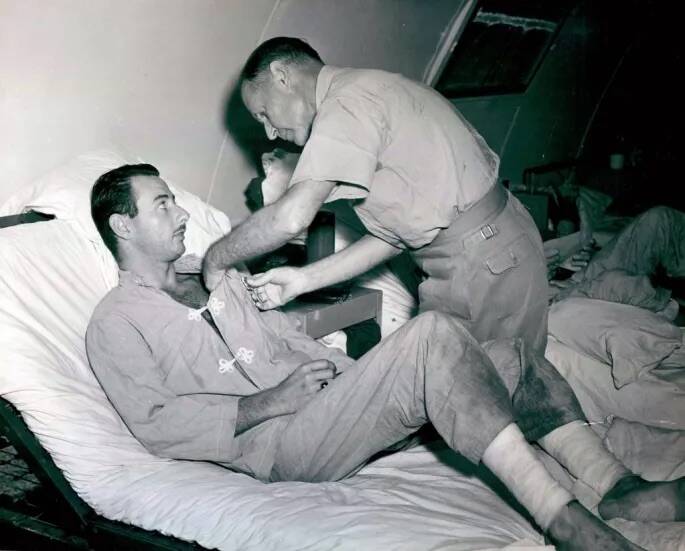
National ArchivesA survivor of the USS Indianapolis disaster being treated for his wounds.
Shortly after midnight on July 30, 1945, the USS Indianapolis was sunk by two Japanese torpedoes in the final days of World War II. Though some 900 men of the 1,196 crew had survived, their terrible ordeal was just beginning. Drawn by noise and the smell of blood, sharks began to gather in the water. And the USS Indianapolis shark attack would soon become known as one of the worst shark attacks to ever occur.
Over the next four days and five nights, the men of the USS Indianapolis struggled to survive. They formed groups, kicked at the sharks, and tried to push the dead away to avoid drawing sharks closer. But the sharks were relentless. Even opening a can of Spam could start a feeding frenzy.
By the time rescue finally came, hundreds of men had died — just 316 were pulled out of the water by August 3. Scores had died from dehydration and exposure, and as many as 150 men had been killed by sharks.
This is the story of the USS Indianapolis shark attack, one of the deadliest shark attacks in human history.
The War Service Of The USS Indianapolis
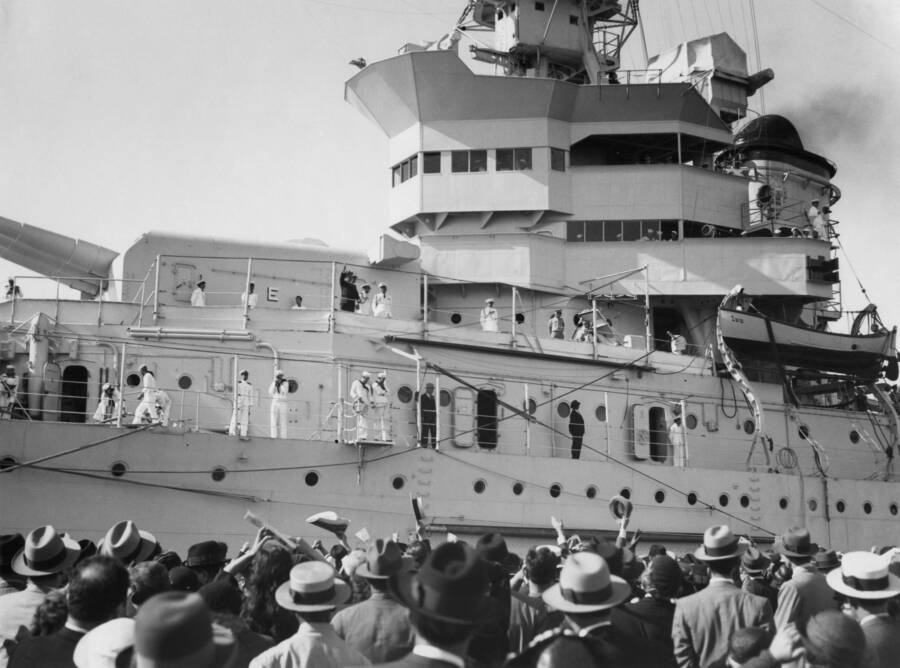
Everett Collection Historical/Alamy Stock PhotoPresident Franklin Roosevelt arriving in Uruguay on the USS Indianapolis in December 1936.
Before the USS Indianapolis shark attack, the Portland-class heavy cruiser had played a pivotal role in the Pacific Theater during World War II. At the onset of the war, the Indianapolis was conducting training exercises near Johnston Atoll when Pearl Harbor was attacked by the Japanese. Following the bombardment, the Indianapolis joined Task Force 12 in an unsuccessful search for the Japanese carriers responsible for the assault.
From that point on, the USS Indianapolis participated in several important campaigns, including the Battle of Attu, the invasion of the Gilbert Islands, the Marshall Islands campaign, and the Battle of the Philippine Sea.
In February 1945, the Indianapolis also provided support for landing forces during the invasion of Iwo Jima. The Indianapolis continued its support during the Battle of Okinawa, where it engaged enemy aircraft and provided pre-invasion bombardment. Then on March 31 the ship was struck by a kamikaze aircraft — causing significant damage that needed repair.
Following the repairs, the crew of the USS Indianapolis was tasked with a top-secret mission: to deliver components of the atomic bomb “Little Boy” to Tinian Island ahead of the bombing of Hiroshima and Nagasaki. The mission was, in fact, so secret that many members of the crew didn’t know what they were transporting. They were in the dark about the mission as the USS Indianapolis traveled 5,000 miles from San Francisco to Tinian in just 10 days, from July 16, 1945 to July 26, and dropped off its important cargo.
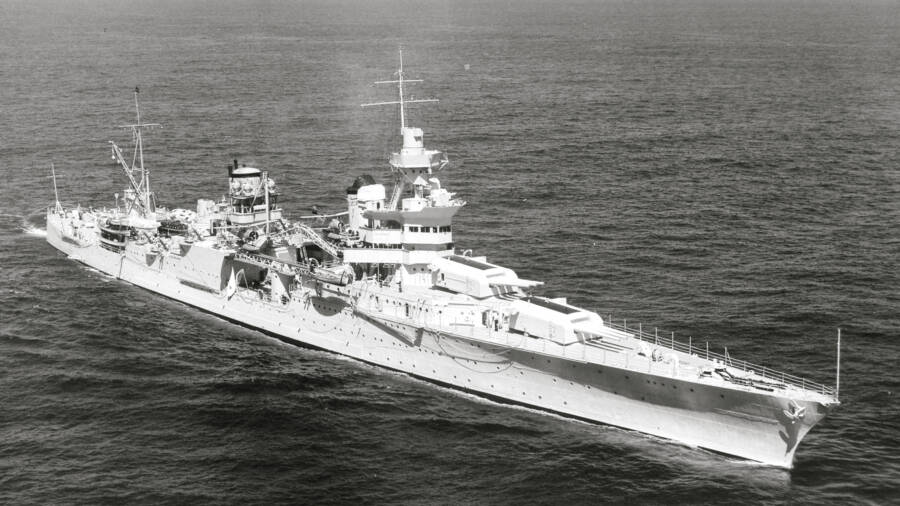
National ArchivesThe USS Indianapolis.
With its secretive mission complete, the USS Indianapolis sailed to Guam, then set out again for Leyte Gulf in the Philippines on July 28. The ship planned to rendezvous with the USS Idaho ahead of the planned Allied invasion of Japan. But it would never make it there. Instead, the USS Indianapolis shark attack would begin just a few days later on July 30.
The Assault On The USS Indianapolis — And The Deadly Shark Attack That Followed
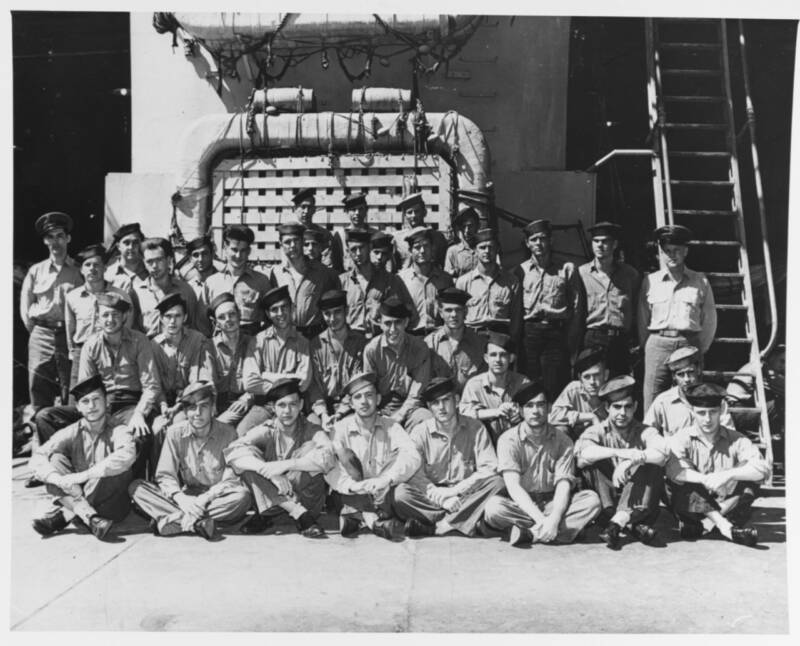
National ArchivesThe crew of the USS Indianapolis.
Though World War II had ended in Europe, it was still raging in the Pacific. So when Lieutenant Commander Mochitsura Hashimoto of Japan detected the USS Indianapolis in firing range of his submarine shortly after midnight on July 30, 1945, he attacked with a spread of six torpedos.
Two of the torpedos struck the Indianapolis on its starboard side. The first torpedo detonated in the forward magazine, causing a catastrophic explosion. The second struck near the fuel tanks, causing them to burst into a pillar of flame that quickly engulfed the cruiser.
The ship began to list heavily almost immediately. And within 12 minutes, the USS Indianapolis was underwater, taking nearly 300 crew members with it. The 900 who survived, however, didn’t find themselves in any less of a harrowing a situation. Many were injured, and as the survivors gathered on rafts, it became clear that their ordeal was far from over.
Sharks — probably oceanic whitetip sharks and tiger sharks — had been attracted to the scene by the sound of the explosion, the movement of the survivors in the water, and the smell of blood. Though they initially targeted the dead, they soon turned their attention toward the living.
“It was a bad experience,” Harold Bray, a Navy veteran and a survivor of the USS Indianapolis shark attack, recalled to CBS News in 2023. “There was nothing good about it. Every time you looked around, somebody was gone. The sharks were there. That was a terrible scene. The sharks got a few young guys. Oh, I don’t want to talk about it…”
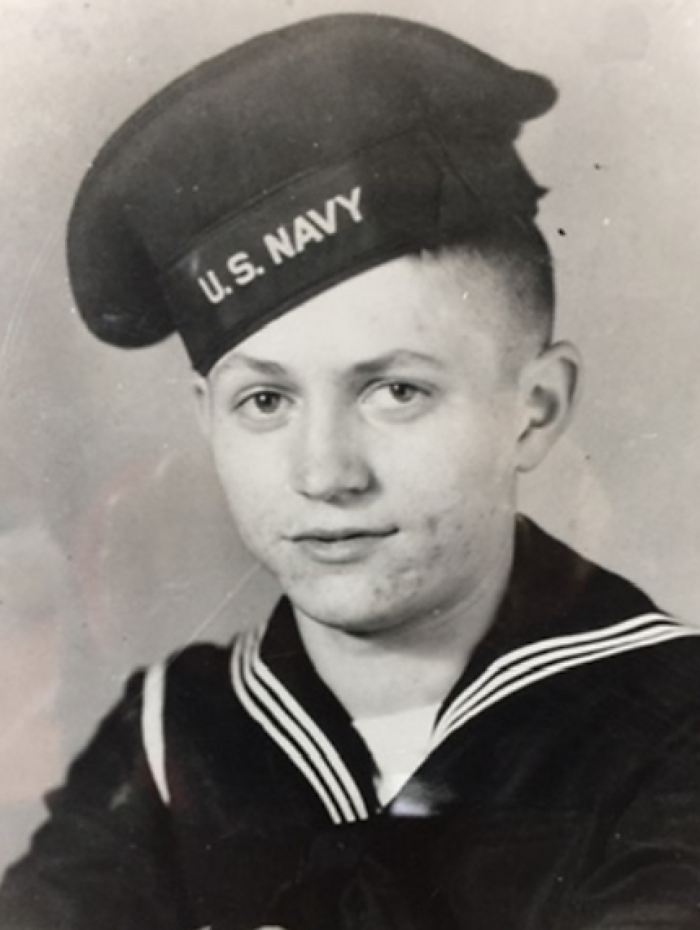
U.S. NavyHarold Bray, one of the USS Indianapolis shark attack survivors.
Another survivor, Loel Dean Cox, told the BBC in 2013:
“[The sharks] were continually there, mostly feeding off the dead bodies. Thank goodness, there were lots of dead people floating in the area… We were losing three or four each night and day. You were constantly in fear because you’d see ’em all the time. Every few minutes you’d see their fins — a dozen to two dozen fins in the water.”
Cox said the clear water made the sharks visible at all times throughout the terrible ordeal, and that they would come up “like lightning” to grab a sailor and pull him under. “One came up and took the sailor next to me,” he recalled. “It was just somebody screaming, yelling, or getting bit.”
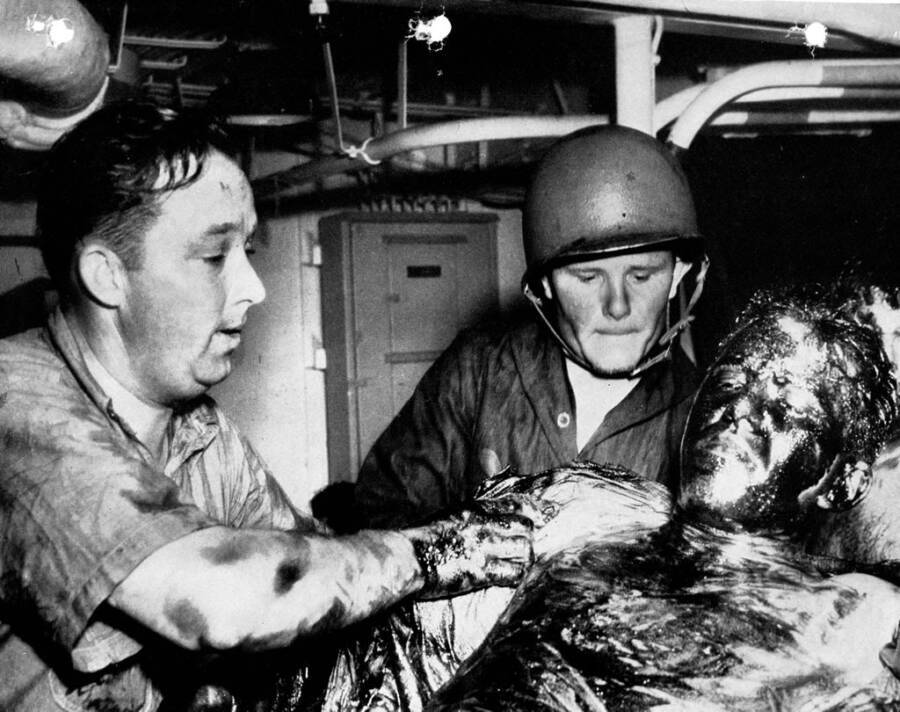
U.S. NavyMany survivors were covered in oil, making the rescue effort all the more difficult.
The situation was complicated further by the secret nature of the USS Indianapolis’ mission. No distress signal had been sent, and when the ship failed to appear at its intended destination, no one alerted the Navy. For four days and five nights, the surviving crew members gathered on rafts, desperately trying to fend off the sharks — as well as the effects of dehydration, injury, and saltwater poisoning.
Then, on August 2, salvation came.
The Aftermath Of One Of The Worst Shark Attacks In History
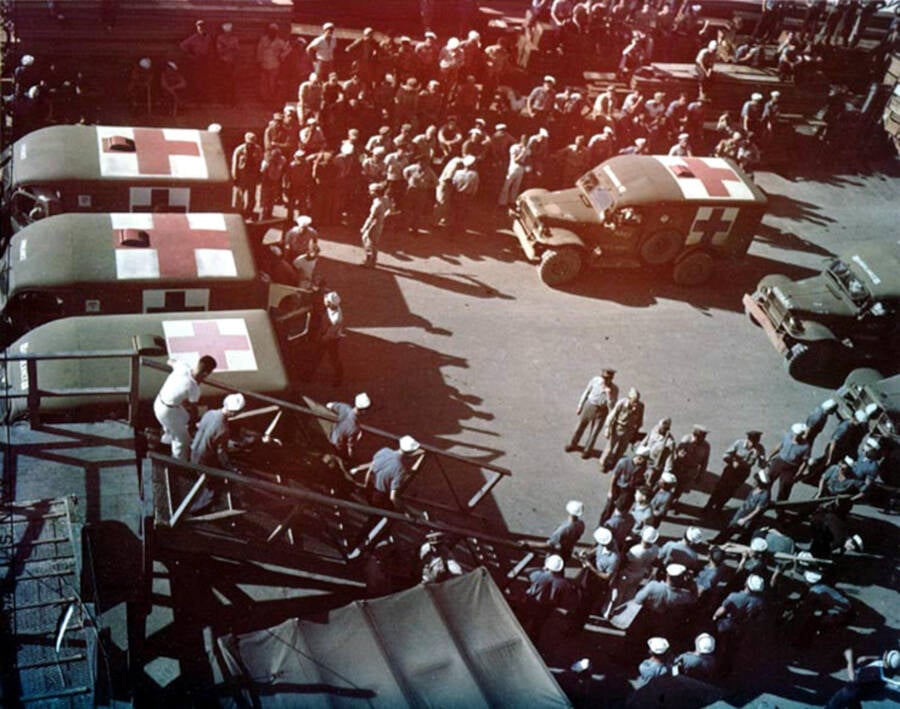
The Picture Art Collection/Alamy Stock PhotoSurvivors of the USS Indianapolis being brought from the U.S. Navy hospital ship USS Tranquillityto Guam on August 8, 1945.
On August 2, 1945, a routine patrol flight by Lieutenant Wilbur C. Gwinn spotted a huge oil slick, which he initially took as the trail of a Japanese submarine. But it was actually the wreckage of the USS Indianapolis. Once Gwinn spotted the men in the water, he promptly reported what he’d seen, and a rescue operation began.
First came a plane, and then a destroyer, the first of seven rescue ships. Cox described the appearance of these ships as something akin to “a strong, big light from heaven… I thought it was angels coming.”
Though the ships were able to save hundreds of men, the casualties of the USS Indianapolis shark attack were astounding. Of an crew of 1,196, 900 had survived the sinking. And only 316 came out of the water alive.
In the aftermath, the U.S. military pinned blame on the ship’s captain, Charles B. McVay III. He was court-martialed and charged with “hazarding his ship by failing to zigzag” and “failing to issue timely orders to abandon ship.” However, Hashimoto later stated that “zigzagging” would have made no difference, and that he would have fired on the McVay’s ship either way.
“It would have involved no change in the method of firing the torpedoes,” he said through a translator, according to the Naval History And Heritage Command, “but some changes in maneuvering.”
Hashimoto’s testimony, however, did not help McVay. He was convicted of the first charge, and died by suicide in 1968. McVay had purportedly received countless letters and phone calls from the loved ones of men who’d died during the USS Indianapolis shark attack, and carried significant guilt about his role in the tragedy. That said, Congress exonerated him in 2000 and determined that his court-martial was a miscarriage of justice.
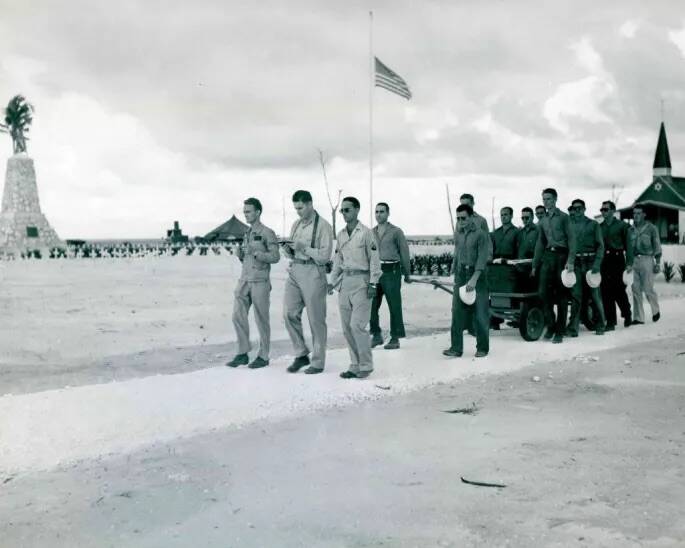
National ArchivesMembers of the U.S. Navy carrying the body of a dead Indianapolis crew member to his final resting place.
But while the USS Indianapolis shark attack went down as the worst in history, it should also not outweigh the pivotal role the ship played during the World War II.
By all metrics, the USS Indianapolis was one of the finest, and most important, naval vessels in the history of the United States. Though the ship is remembered today because of the USS Indianapolis shark attack, its legacy goes well beyond that horrible tragedy.
After reading about the USS Indianapolis shark attack, learn all about the gruesome 1916 shark attacks. Then read about the sinking of the Sultana, the worst maritime disaster in American history.





